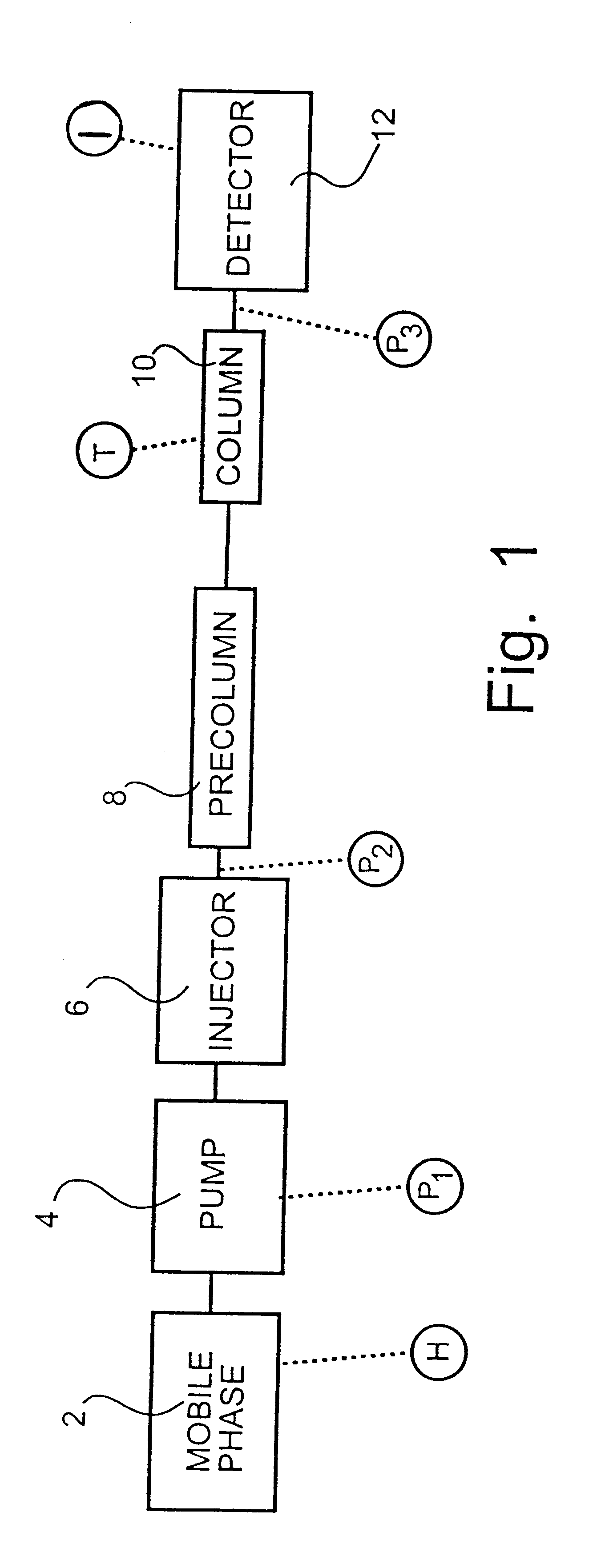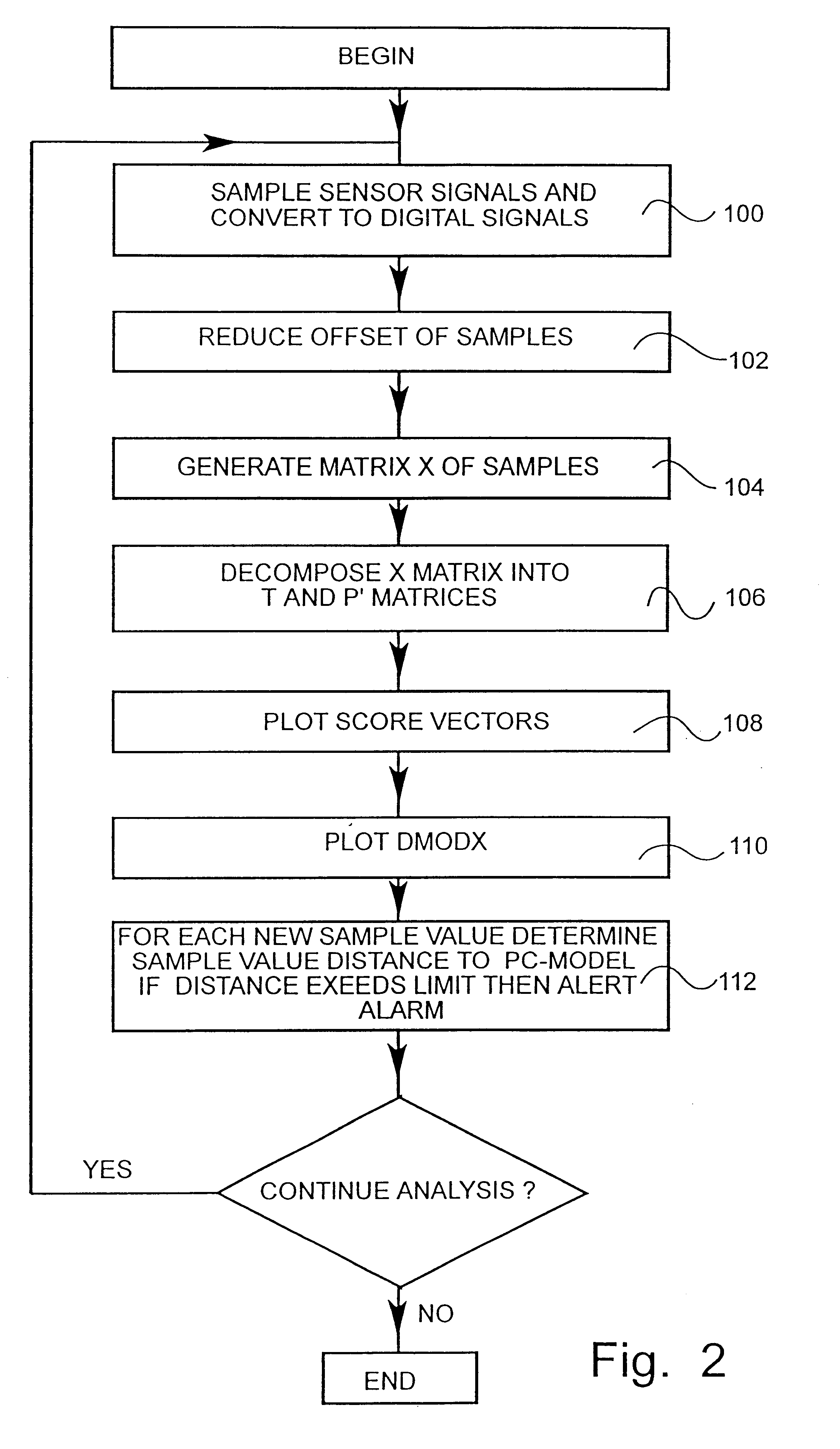Process control
- Summary
- Abstract
- Description
- Claims
- Application Information
AI Technical Summary
Benefits of technology
Problems solved by technology
Method used
Image
Examples
Embodiment Construction
The present invention provides a method for monitoring flow based analytical separation processes and / or flow analysis processes. In the following the invention will be exemplary described as applied on a liquid chromatography process. It is of course equally applicable to other processes comprised in the above mentioned groups.
A conventional liquid chromatograph comprises a mobile phase 2, a pump 4, an injector 6, a precolumn 8, a column 10 and a detector 12. The detector is a UV light detector. Alternatively, two or more separate pumps may be used for creating mobile phase gradients, allowing a continuous change in mobile phase composition during a run. In the application illustrated on the drawing, however, the method is applied to an isocratic, i.e. constant mobile phase composition, set-up.
The mobile phase 2 is continuously pumped through the system by means of the pump 4. By means of the injector 6 the mixture to be analysed is added to and dissolved into the mobile phase 2, w...
PUM
 Login to View More
Login to View More Abstract
Description
Claims
Application Information
 Login to View More
Login to View More - R&D
- Intellectual Property
- Life Sciences
- Materials
- Tech Scout
- Unparalleled Data Quality
- Higher Quality Content
- 60% Fewer Hallucinations
Browse by: Latest US Patents, China's latest patents, Technical Efficacy Thesaurus, Application Domain, Technology Topic, Popular Technical Reports.
© 2025 PatSnap. All rights reserved.Legal|Privacy policy|Modern Slavery Act Transparency Statement|Sitemap|About US| Contact US: help@patsnap.com



